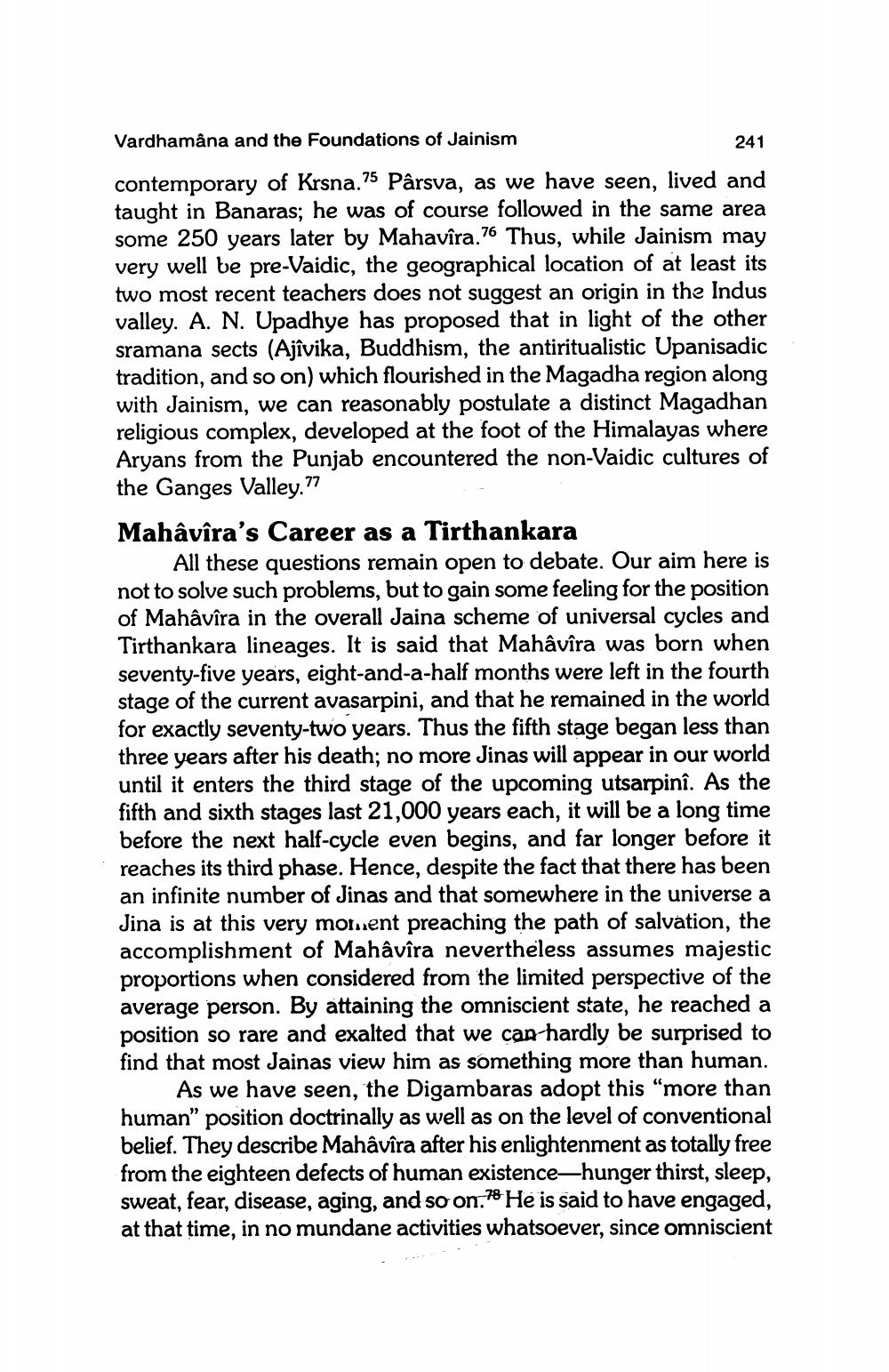________________
Vardhamâna and the Foundations of Jainism
241
contemporary of Krsna.75 Pârsva, as we have seen, lived and taught in Banaras; he was of course followed in the same area some 250 years later by Mahavîra.76 Thus, while Jainism may very well be pre-Vaidic, the geographical location of at least its two most recent teachers does not suggest an origin in the Indus valley. A. N. Upadhye has proposed that in light of the other sramana sects (Ajîvika, Buddhism, the antiritualistic Upanisadic tradition, and so on) which flourished in the Magadha region along with Jainism, we can reasonably postulate a distinct Magadhan religious complex, developed at the foot of the Himalayas where Aryans from the Punjab encountered the non-Vaidic cultures of the Ganges Valley.77
Mahâvîra's Career as a Tirthankara
All these questions remain open to debate. Our aim here is not to solve such problems, but to gain some feeling for the position of Mahâvîra in the overall Jaina scheme of universal cycles and Tirthankara lineages. It is said that Mahâvîra was born when seventy-five years, eight-and-a-half months were left in the fourth stage of the current avasarpini, and that he remained in the world for exactly seventy-two years. Thus the fifth stage began less than three years after his death; no more Jinas will appear in our world until it enters the third stage of the upcoming utsarpinî. As the fifth and sixth stages last 21,000 years each, it will be a long time before the next half-cycle even begins, and far longer before it reaches its third phase. Hence, despite the fact that there has been an infinite number of Jinas and that somewhere in the universe a Jina is at this very moment preaching the path of salvation, the accomplishment of Mahâvîra nevertheless assumes majestic proportions when considered from the limited perspective of the average person. By attaining the omniscient state, he reached a position so rare and exalted that we can hardly be surprised to find that most Jainas view him as something more than human. As we have seen, the Digambaras adopt this "more than human" position doctrinally as well as on the level of conventional belief. They describe Mahâvîra after his enlightenment as totally free from the eighteen defects of human existence-hunger thirst, sleep, sweat, fear, disease, aging, and so on." He is said to have engaged, at that time, in no mundane activities whatsoever, since omniscient




